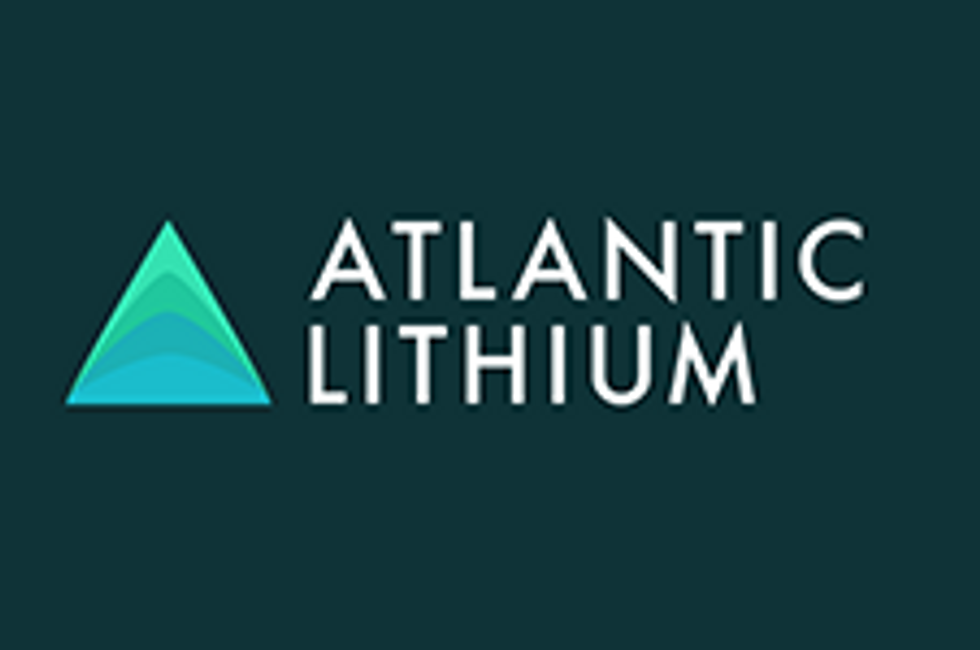
What happened to lithium in Q3 2019? Our lithium market update outlines key developments and explores what could happen moving forward.
Click here to read the latest lithium market update.
Lithium continued to make news headlines during the third quarter of the year, and despite the downtrend in prices and stocks, many remain bullish on the future of the battery metal.
Demand for lithium is forecast to triple by 2025, as demand for lithium carbonate and hydroxide, used in lithium-ion batteries, continues to increase.
How did the metal perform in the third quarter of 2019, and what’s ahead for lithium in the near term? Read on for an overview of the main news that impacted the lithium market in Q3, plus a look at what investors should watch out for the rest of the year.
Lithium market update: Price decline continues
Prices continued to be a hot topic in the lithium space, with many market watchers looking to see where they are headed next — in particular in the next five years.
“We expected prices to weaken and they have. Our forecast for Q3 was for spot cif China, Japan Korea (CJK) carbonate prices to average US$11 per kilogram and hydroxide US$14.25 per kilogram; in the end they averaged US$10.90 and US$13.10 respectively,” said Fastmarkets Head of Base Metals and Battery Research William Adams.
Similarly, Benchmark Mineral Intelligence Head of Price Assessment Andrew Miller said prices continued to see downward pressure across the lithium chemical space in Q3 — led by the competitive pricing in China.
“With the ongoing pressure on spodumene prices, Chinese converters have more scope to lower prices, and this has made it difficult for producers without direct access to feedstock to maintain their margins,” he added.
In August, analysts at Morgan Stanley (NYSE:MS) released a report saying they expect prices to fall by 30 percent by 2025. Prices will continue their downtrend to reach US$7,200 per tonne that year as new technologies lower the cost of production and keep the market oversupplied.
“We believe most investors and the sell side underestimate the ability of companies to ramp up production of high-quality material and lower production costs in the medium term,” analysts said.
Also weighing in on prices with a bearish tone during the three month period was CRU Group, which released a note saying it expects lithium prices to trade in the single digits in the long term as cost fundamentals triumph over market hype.
CRU’s spodumene production cost forecast is around US$525 per tonne, or US$8,000 tonnes of lithium carbonate equivalent (LCE).
“Many market players continue to forecast long-run prices for lithium in the mid-teens LCE, citing refinery bottlenecks and the potential for ramp-up delays in the mining and refining sector,” analysts at CRU said. “Based on previous experience in other commodities, CRU finds this argument unconvincing.”
When looking at how prices will trend in the near term, for Miller, the cost structure in China means the space is moving close to the bottom of the market there, but there will be limited upside to pricing.
“As a result, rest of the world suppliers will be forced to bring prices down towards China levels to remain competitive and (that is why) you’re likely to see continued softening of prices into 2020, although the decreases will be less extreme than in H1 2019,” he added.
Lithium market update: Supply and demand dynamics
In Q3, the space saw plenty of news and announcements from major and junior players.
During the three month period, major producers released quarterly results, with the theme of declining prices being a common denominator.
China’s Tianqi Lithium (SZSE:002466) saw a decline in profits due to a drop in lithium chemical product prices and increasing financial costs.
Earnings for Chile’s SQM (NYSE:SQM) fell as well due to the slump in lithium prices and as the company sold lower-grade and lower-quality products to China during the quarter. SQM is expecting prices to average US$10,000 during Q3.
Chinese giant Ganfeng Lithium (OTC Pink:GNENF,SZSE:002460) also reported a decline in profits during the first half due to lower prices and despite seeing bigger sales volumes.
Meanwhile, Albemarle (NYSE:ALB) saw a slight increase in sales demand, up 2.3 percent compared to a 30.2 percent jump seen in the same quarter last year. However, the US-based company has revised a deal to buy the Wodgina mine to cut on capital expenditures.
Despite the not-so-favorable results, top producers continue to bet on the long term fundamentals of lithium.
Chile-focused SQM said it is set to invest US$1.33 billion into its operations in Chile and Australia in the next five years, as the miner remains optimistic about the outlook for the battery metal.
“The fundamentals support a vision of significant growth in the coming years,” said SQM Senior Vice President Pablo Altamiras.
Chinese producer Tianqi (SZSE:002466) has put its expansion plans for its lithium hydroxide plant in Western Australia on hold to focus on steady production. Tianqi launched production at its Kwinana chemical facility early in September, with ramp up estimated to take 12 to 18 months.
In Australia, miners continued to strengthen their relationships throughout the supply chain in Q3. Pilbara Minerals (ASX:PLS,OTC Pink:PILBF) signed an additional offtake deal with Chinese automaker Great Wall Motor (OTC Pink:GWLLF,HKEX:2333) that is set to start in August.
In September, China’s largest electric vehicle battery maker announced plans to buy an 8.5 percent stake in the Perth-based lithium miner for AU$55 million. The strategic investment from CATL (SZSE:300750) is part of Pilbara Minerals’ fundraising efforts to further develop its Pilgangoora lithium-tantalum project in Western Australia. The company is looking to raise a total of AU$91.5 million.
Meanwhile, Altura Mining (ASX:AJM,OTC Pink:ALTAF) signed an offtake agreement with Chinese lithium materials producer Shandong Ruifu (SZSE:300243).
Looking over to North America, Vancouver-based Lithium Americas (NYSE:LAC,TSX:LAC) increased its expected production capacity of battery-quality lithium at Caucharí-Olaroz to 40,000 tonnes per year for 40 years. The company also announced plans to cut initial production target at its Thacker Pass project in Nevada from 30,000 tonnes to 20,000 tonnes of lithium carbonate equivalent.
In Canada, shares of Nemaska Lithium (TSX:NMX,OTCQX:NMKEF) jumped after news hit that Pallinghurst Group is contemplating a C$600 million investment in the company to develop the Whabouchi mine in Quebec, with Nemaska saying in October it hopes to close the deal by the end of the year.
Meanwhile, lithium junior E3 Metals (TSXV:ETMC,OTC Pink:EEMMF) joined forces with top producer Livent (NYSE:LTHM) to develop a direct lithium extraction process. Livent will contribute up to US$5.5 million and its technical expertise to develop a process to produce battery-quality lithium products from E3’s petrolithium brines in Alberta.
Lithium market update: What’s ahead?
As the last quarter of the year begins, there are factors that could impact the lithium space that every investor interested in battery metals should pay attention to.
For Adams, the fourth quarter may see more supply restraints, which could start to rebalance the market, and that should see a base form in prices and in equity prices.
Looking ahead, Fastmarkets remains mildly bearish, looking for cif CJK carbonate prices to average US$9 per kilogram and hydroxide to average US$11 per kilogram in Q4.
“We expect prices to weaken further as we see an oversupply situation in spodumene and with more Chinese convertors and processors being able to produce the right quality material, we see a surplus in the products market too,” Adams said.
For the analyst, Chinese stimulus aimed at the EV market could provide a boost to demand and that could lead to some restocking.
“(This could) perhaps give prices a temporary boost, but overall we see supply as being plentiful,” he added.
For Benchmark Mineral Intelligence, prices will continue to be under pressure into 2020 until spodumene stockpiles are depleted.
“Lower feedstock prices are impacting the margins of new spodumene producers and these suppliers will have to cut back production to allow for the excess feedstock pressures to ease,” Miller said.
In terms of demand, he said there will be the typical restocking approaching the end of the year, and this could be particularly evident across many cathode consumers that have held back from the market as prices have been falling.
“Chemical stocks are now low so these companies will reenter the market, however there are still questions over how much of an uptick we’ll see in China’s battery consumption compared to other years,” he said. “While there will be growth in Q4, there is unlikely to be the same scale of increases that were seen in previous years as a result of the seasonal upswing in China’s EV demand.”
For the expert, it will be towards the end of 2020 when the market is likely to see strong demand growth as battery producers begin to ramp up their supply chains for new battery capacity expansions.
Fastmarkets expects a pick-up for both carbonate and hydroxide demand in the fourth quarter, as it forecasts EV sales to rebound in Q4 ’19 and Q1 ’20.
“Q4 has in recent years been a strong time for EV sales, and, with subsidies on EV expected to be removed altogether in 2020, there may well be a rush to buy. We also would not be surprised to see some government stimulus announced,” Adams said.
“Also, it is important to realize that, while EV sales in China have been falling in recent months, the trend is for more battery-only (BEV) EVs to be sold rather than plug-in hybrids (PHEV) and the former have batteries three to five times as large as PHEVs. This means more battery raw materials are being used per EV sale.”
Looking further ahead, Fastmarkets believes there will be a steady increase in demand for hydroxide as more high-nickel batteries are produced.
“But likewise, with higher spec-LFP batteries also being used, demand for carbonate should pick up too,” Adams said.
Considering the strong demand forecast for lithium in the coming years, a key topic of discussion continues to be investment in the space.
“Investment is still not going into the sector at the speed required to sustain the demand growth levels we’re expecting from 2022/23 onwards,” Miller said. “The downturn in pricing has made investors more wary over the short-term outlook, and development of new projects has either stalled or is in many cases moving slower than the industry requires.”
Don’t forget to follow us @INN_Resource for real-time news updates!
Securities Disclosure: I, Priscila Barrera, hold no direct investment interest in any company mentioned in this article.
Editorial Disclosure: Nemaska Lithium and E3 Metals are clients of the Investing News Network. This article is not paid-for content.
The Investing News Network does not guarantee the accuracy or thoroughness of the information reported in the interviews it conducts. The opinions expressed in these interviews do not reflect the opinions of the Investing News Network and do not constitute investment advice. All readers are encouraged to perform their own due diligence.





